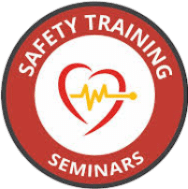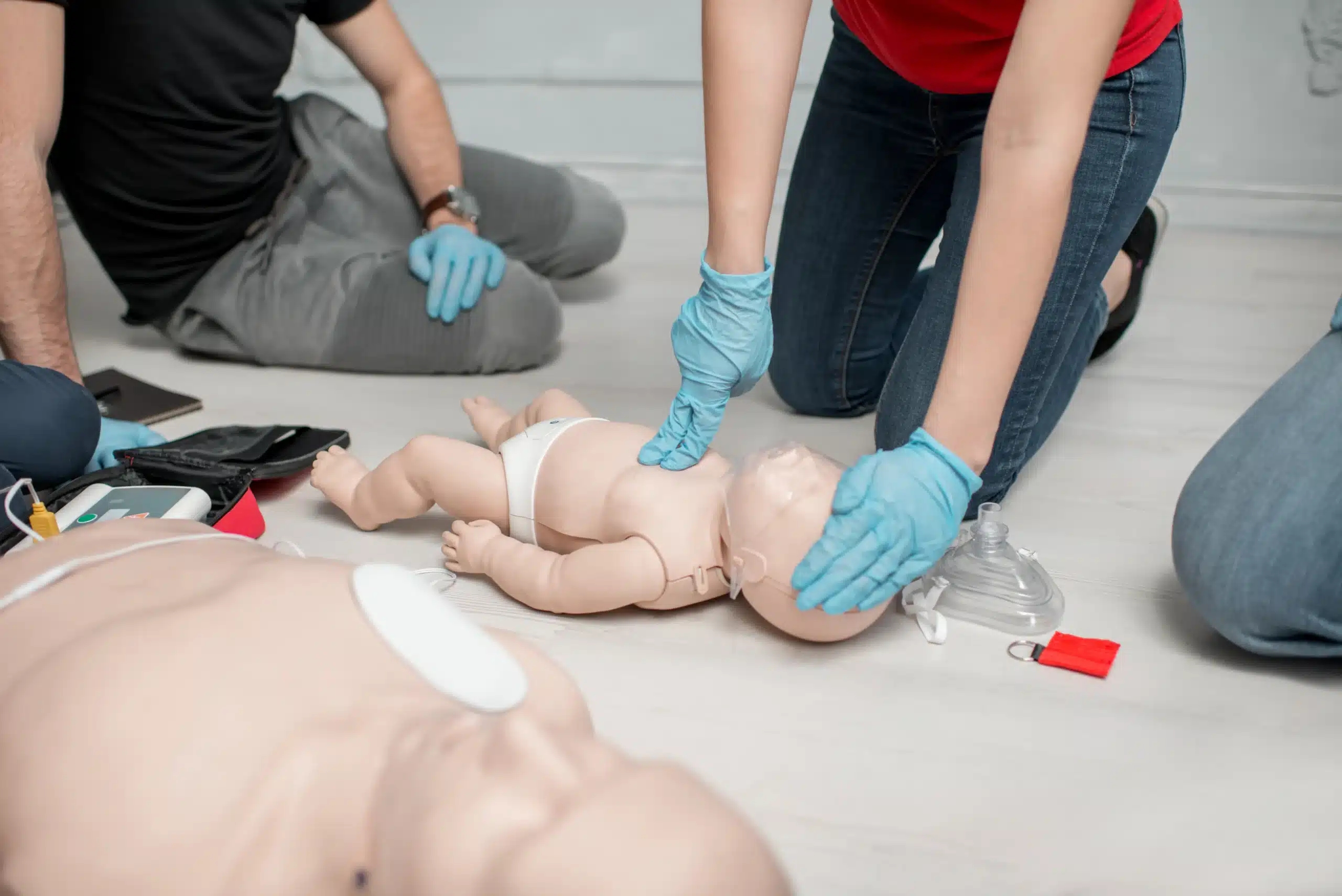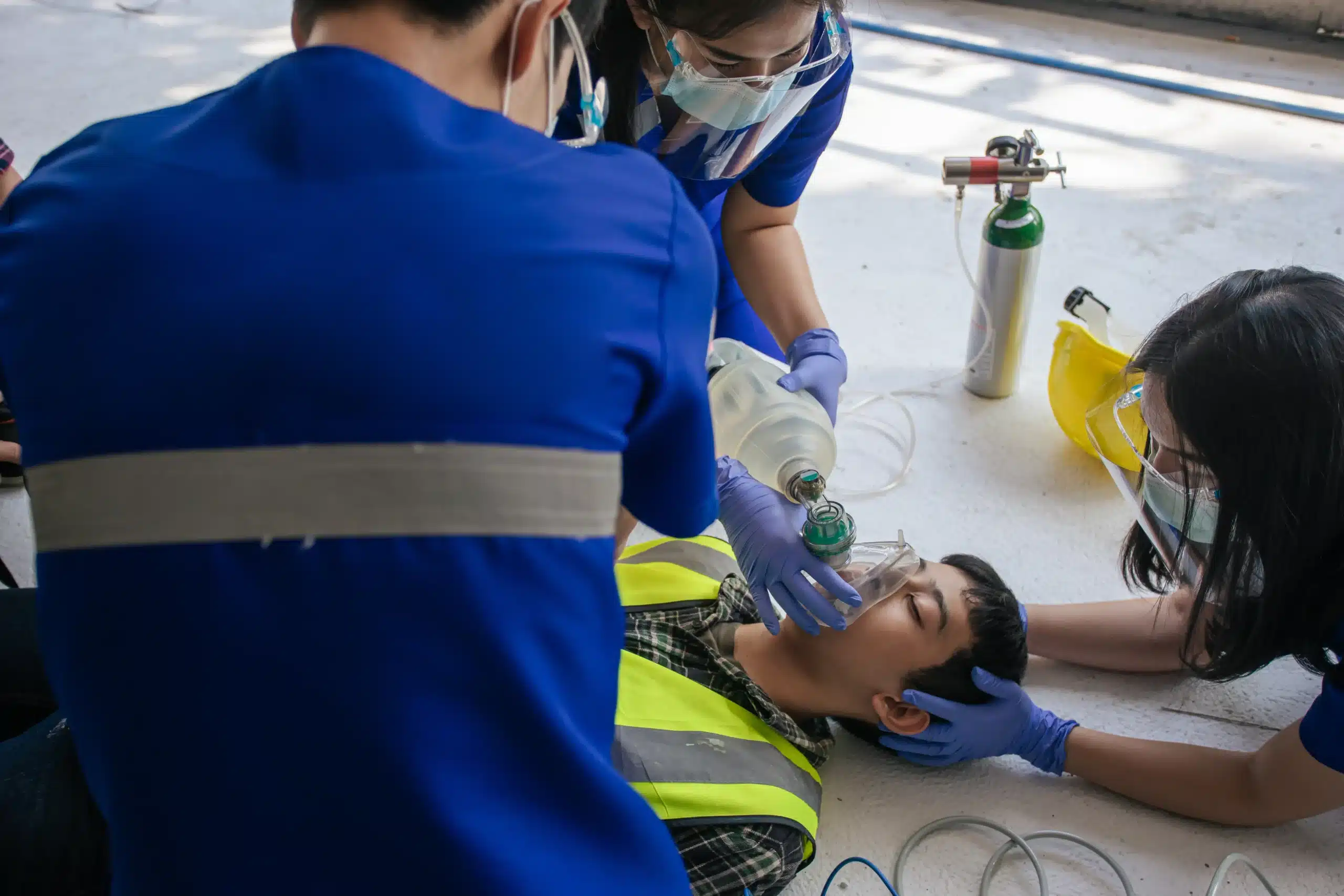Introduction – Critical Role of CPR and First-Aid Training
Emergencies can happen anytime, anywhere—even at work. Being prepared with CPR and first-aid training can make the difference between life and death. This guide explores why these skills are crucial in the workplace, providing valuable insights and practical tips for employees and employers alike. From understanding the benefits of training to knowing what to do when faced with an emergency, you’ll discover how to create a safer work environment for everyone.
Immediate Response Saves Lives
When a colleague collapses or is injured, every second counts. Quick action can significantly increase the chance of survival and recovery. CPR and first-aid training equip employees with the knowledge and confidence needed to respond swiftly and effectively. This immediate response can stabilize the injured person, providing crucial time until medical professionals arrive.
Besides saving lives, rapid intervention can prevent situations from worsening. For instance, knowing how to stop severe bleeding or manage a choking incident can avert further harm. It’s not just about physical injuries; recognizing signs of a heart attack or stroke early on can lead to faster treatment and better outcomes.
Training also fosters a sense of responsibility and readiness. Employees who know how to handle emergencies are more likely to step up and take charge, ensuring that help is administered as soon as possible. This proactive approach creates a culture of care and vigilance in the workplace.
Compliance with Safety Regulations
Regulatory compliance is essential for businesses, and safety regulations often include provisions for emergency preparedness. Many organizations must adhere to standards set by agencies like OSHA (Occupational Safety and Health Administration), which mandate certain safety protocols. CPR and first-aid training help companies meet these legal requirements.
Non-compliance can lead to hefty fines and legal repercussions, tarnishing a company’s reputation. Ensuring that staff are trained in basic lifesaving techniques demonstrates a commitment to employee safety and wellbeing. It showcases a company’s dedication to maintaining a secure work environment.
Following regulations isn’t just about avoiding penalties; it’s about fostering trust within the workforce. Employees feel valued when they know their employer invests in their safety. This trust can improve morale and productivity, benefiting the organization as a whole.
Reducing Workplace Accidents
Accidents happen, but their impact can be minimized. CPR and first-aid training teach employees to identify potential hazards and take preventive measures. This awareness contributes to a safer workplace, reducing the likelihood of accidents occurring in the first place.
Training empowers employees to report unsafe conditions and advocate for necessary changes. Whether it’s a slippery floor, faulty equipment, or inadequate lighting, addressing these issues proactively can prevent injuries. A culture of safety encourages everyone to be vigilant and responsible.
Furthermore, trained personnel can conduct risk assessments and implement safety practices. By understanding common workplace injuries and how to avoid them, employees become part of the solution, actively contributing to a safer work environment.
Building Confidence in Emergency Situations
During a crisis, panic can hinder effective response. Training instills confidence, allowing employees to remain calm and composed. This mental preparedness is crucial for making sound decisions under pressure.
Confident employees are more likely to remember their training and apply it correctly. They can assess the situation, prioritize actions, and communicate effectively with emergency responders. This clarity of thought ensures that help is provided efficiently and without delay.
Confidence also spreads among team members. When one person takes charge with assurance, it inspires others to follow suit. A team that knows how to work together in emergencies is better equipped to handle unexpected challenges.
Enhancing Teamwork and Cooperation
Emergency situations require collaboration. CPR and first-aid training emphasize teamwork, teaching employees to support one another in critical moments. This cooperation is key to managing emergencies successfully.
Training sessions often involve group activities and simulations, reinforcing the importance of working together. Employees learn to delegate tasks, provide clear instructions, and assist each other. These skills translate to improved teamwork beyond emergencies, enhancing overall workplace dynamics.
A united team is more resilient, capable of handling stress and adversity. By fostering cooperation through training, organizations build stronger, more cohesive teams that can tackle challenges with confidence and unity.
Improving Mental Health Awareness
Mental health is as important as physical health, and emergencies can take a toll on both. CPR and first-aid training often include components on mental health first aid, equipping employees to recognize and respond to mental health crises.
Understanding the signs of anxiety, depression, or panic attacks enables employees to provide appropriate support. This awareness reduces stigma and encourages open conversations about mental health. Offering help and resources fosters a supportive environment where individuals feel safe to seek assistance.
Promoting mental health awareness within the workplace demonstrates a commitment to holistic wellbeing. It sends a powerful message that the organization cares about every aspect of employees’ health, building a compassionate and inclusive culture.
Fostering a Culture of Safety
A workplace committed to safety empowers its employees. CPR and first-aid training are fundamental to creating a culture where safety is prioritized and valued. This culture extends beyond compliance, becoming an integral part of daily operations.
Employees take pride in working within a safe environment, knowing that their wellbeing is a priority. This pride increases job satisfaction and loyalty, reducing turnover rates and attracting top talent. A safe workplace is a desirable workplace.
Encouraging safety also involves continuous learning and improvement. Regular refresher courses, updated protocols, and open communication keep safety at the forefront of everyone’s mind. Organizations that invest in ongoing training demonstrate their dedication to maintaining and enhancing safety standards.
Supporting Community Resilience
Workplace training has ripple effects beyond the office. Employees who receive CPR and first-aid training carry these skills into their communities. They become valuable assets, ready to assist in emergencies wherever they occur.
This community impact extends the benefits of training, creating a network of individuals prepared to respond to crises. It strengthens community resilience, ensuring that more people are equipped to handle emergencies effectively.
Organizations can take pride in contributing to the greater good. By investing in training, businesses enhance not only their own safety but also the wellbeing of the communities they serve.
Cost-Effective Measures for Businesses
Investing in safety training is cost-effective. While there may be upfront expenses, the long-term savings are significant. Reducing workplace accidents and injuries lowers healthcare costs and minimizes lost productivity.
Trained employees can address minor injuries on-site, reducing the need for external medical services. This capability saves time and money, allowing operations to continue smoothly without disruption.
Furthermore, a focus on safety reduces potential legal liabilities. Avoiding accidents and demonstrating due diligence protects businesses from costly lawsuits and settlements. The return on investment for training is substantial, benefiting both employees and employers.
Encouraging Personal Development
Training offers more than just professional benefits; it encourages personal growth. Employees gain skills that are applicable in various aspects of life, boosting confidence and self-esteem.
Learning life-saving techniques empowers individuals, giving them a sense of accomplishment and purpose. This growth translates to increased engagement and motivation, positively impacting job performance and satisfaction.
By supporting personal development, organizations show they value their employees as individuals. This investment builds loyalty and fosters a positive work culture, where everyone is encouraged to reach their full potential.
Reinforcing Ethical Responsibility
Providing CPR and first-aid training is an ethical responsibility. Organizations have a duty to protect their employees and create a safe work environment. Training aligns with these values, demonstrating a commitment to ethical practices.
This responsibility extends to treating employees with dignity and respect, ensuring their safety is prioritized. Ethical organizations build trust and credibility, enhancing their reputation both internally and externally.
By fulfilling their ethical obligations, businesses set a standard for others to follow. Leading by example inspires positive change and reinforces the importance of safety across industries.
Conclusion – Critical Role of CPR and First-Aid Training
The importance of workplace CPR and first-aid training cannot be overstated. These skills save lives, reduce accidents, and foster a culture of safety. By investing in training, organizations demonstrate their commitment to employee wellbeing and ethical responsibility.
This guide has explored the numerous benefits of training, from enhancing teamwork to improving mental health awareness. Implementing these practices creates a safer, more resilient workplace that values every individual’s safety.
Take the next step—consider enrolling your team in a CPR and first-aid training program. Equip them with the skills to make a difference, both at work and in the wider community. Your commitment to safety can have a profound impact, shaping a better future for everyone involved.








